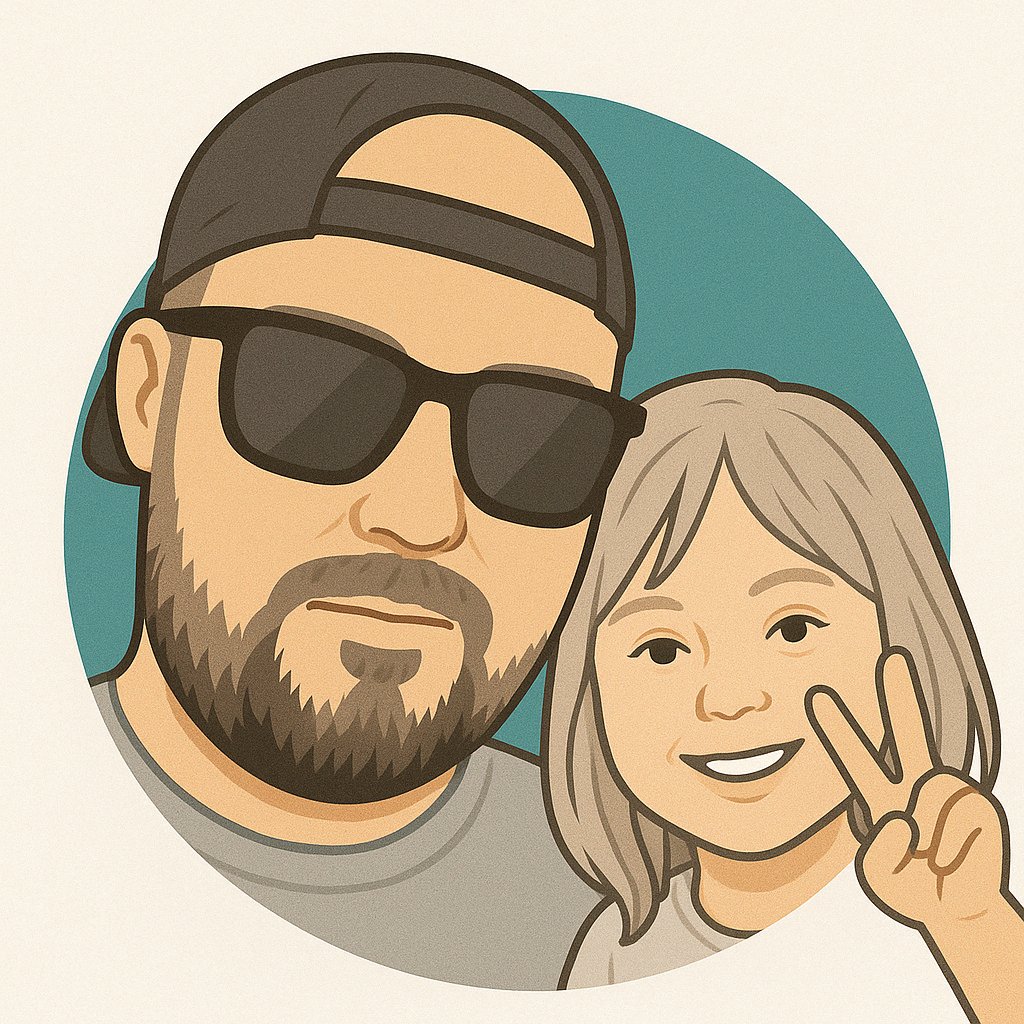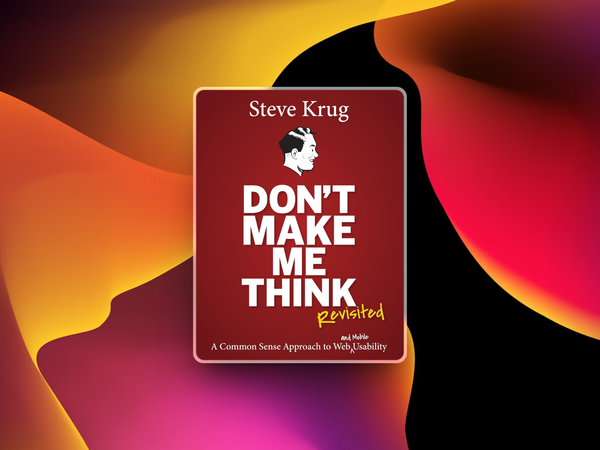When designing digital systems, it’s easy to fall into the trap of thinking in terms of rigid workflows and application logic.
However, modern users expect more human-like, intuitive interactions, often craving the natural flow of a real conversation.
Enter conversational design, a design philosophy that uses the principles of human conversation to create digital systems that feel fluid, cooperative, and goal-oriented.
Whether it’s voice assistants, chatbots, or user interfaces, systems that emulate human conversation not only provide better user experiences but also convert more effectively.
What Is Conversational Design?
At its core, conversational design aims to replicate the cooperative and intuitive nature of human dialogue within digital interactions.
When two people converse, they share an implicit understanding of turn-taking, politeness, and relevance. In digital design, mimicking these principles fosters a sense of trust and ease for users, leading to a more natural experience.
While voice assistants like Alexa and Google Home are prime examples, these principles extend to websites, apps, and even physical interfaces.

For example, if a user visits a website to make a purchase, the process should be as seamless as a friendly conversation, guiding them effortlessly from discovery to checkout.
UX/UI design for conversion focuses on achieving just that—creating interfaces that intuitively lead users to take action while providing a positive experience.
The more natural the interaction, the more likely users are to convert, whether that means completing a purchase, signing up for a service, or providing valuable feedback.
Designing a Website That Converts
So how do you design a website that converts, leveraging the conversational design principles?
Start with understanding user needs.
Every visitor arrives with a specific goal—be it finding information, making a purchase, or seeking customer support.
Through proper UX conversion optimisation, your website should remove barriers and friction, guiding users toward their objectives efficiently.
- Clear Communication: Just like in conversations, clarity is key. A user doesn’t want to guess what action to take next. Provide clear, concise calls-to-action (CTAs) that are logically placed. Avoid jargon and unnecessary steps. A good rule of thumb is the "One-Breath Test"—if you can’t explain what a page does in one breath, it’s likely too complex.
- Cooperation: In a conversation, both parties share responsibility for the exchange. The same applies in cro UX design (conversion rate optimisation through UX). Your website should feel like it's working with the user, not against them. Offer predictive search, autofill options, and real-time feedback to keep the interaction smooth.
- Goal-Oriented Flow: Just as in human conversations, each interaction must have a purpose. A well-designed interface anticipates user goals and offers a clear path to achieving them. For example, if someone is looking to make a purchase, you should provide a streamlined checkout process. Every click should bring them closer to their goal.
- Context Awareness: Imagine speaking with someone who keeps ignoring your cues—frustrating, right? The same happens when a website doesn't account for user context. If a visitor is on a product page, showing them unrelated offers will break the conversational flow. Instead, use targeted recommendations based on user behaviour to maintain relevance.
- Turn-taking: This principle is particularly relevant in interactive websites and systems like chatbots. Turn-taking ensures that the user isn’t bombarded with too much information at once. Whether it’s a guided sign-up process or a chatbot assisting with a query, each step should allow the user to absorb information and respond comfortably, without feeling rushed.
UX/UI Design for Conversion: Speak Human Fluently
In the context of ux/ui design for conversion, it’s crucial to remember that users don't care about the intricacies of your system—they care about ease, efficiency, and achieving their goals.
An effective conversational design mirrors these expectations, guiding users smoothly through their journey.
A prime example is e-commerce.
When users search for a product, they expect to find it quickly, learn about it, and decide whether or not to purchase it without unnecessary friction.

The product page should act like a helpful salesperson, offering clear descriptions, customer reviews, and relevant suggestions—like a human would in a conversation.
UX conversion optimisation hinges on reducing these friction points.
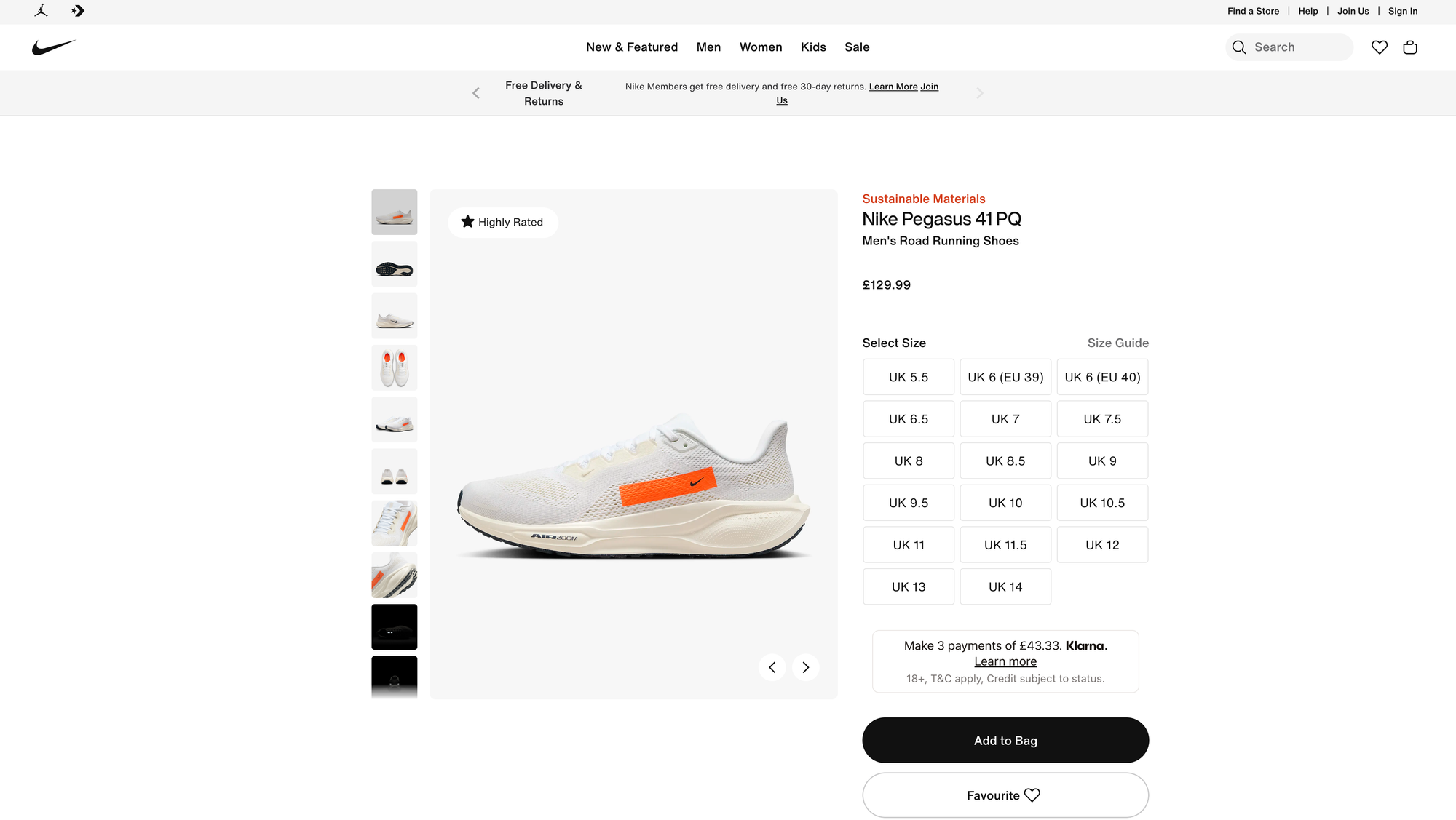
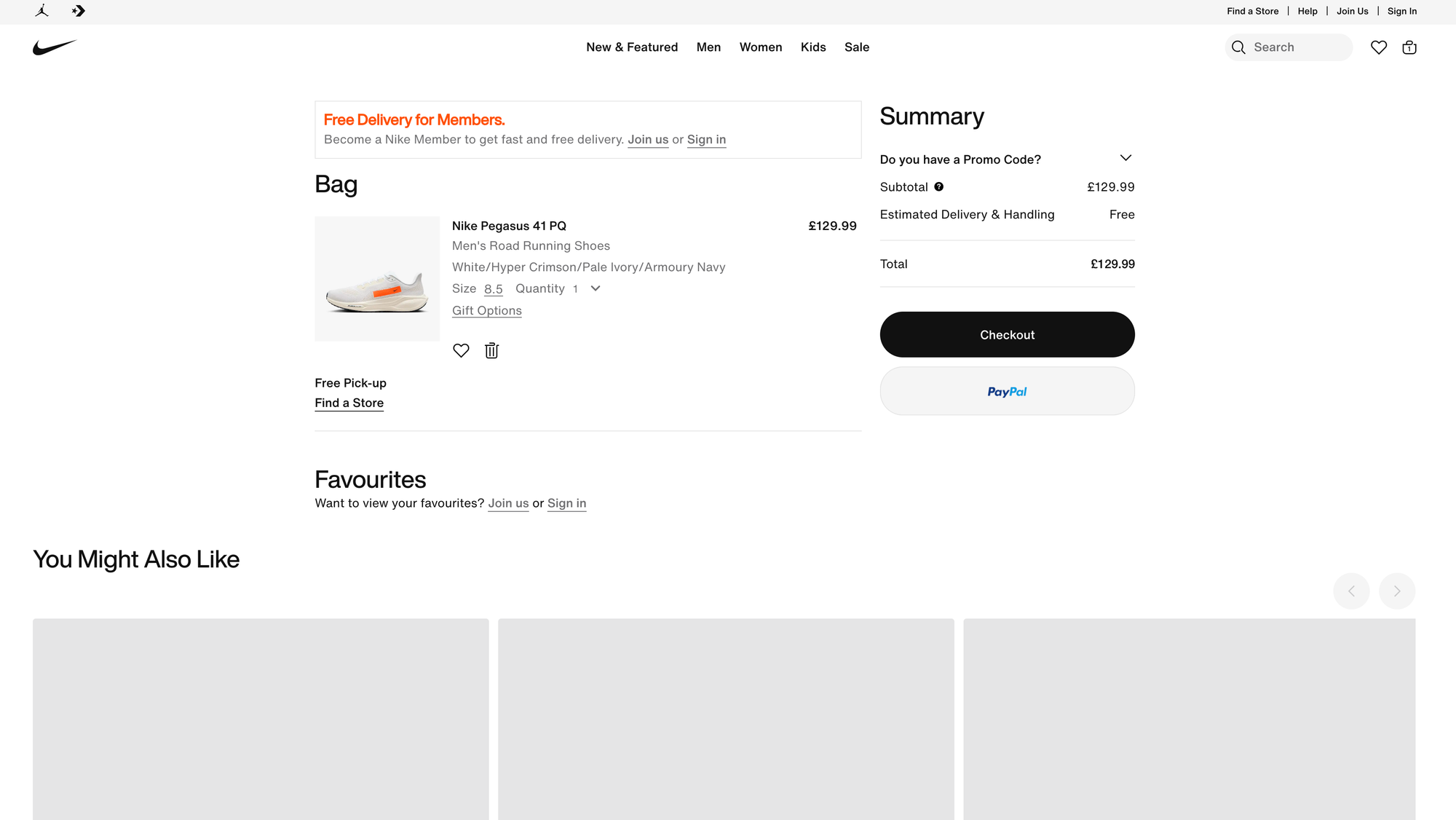
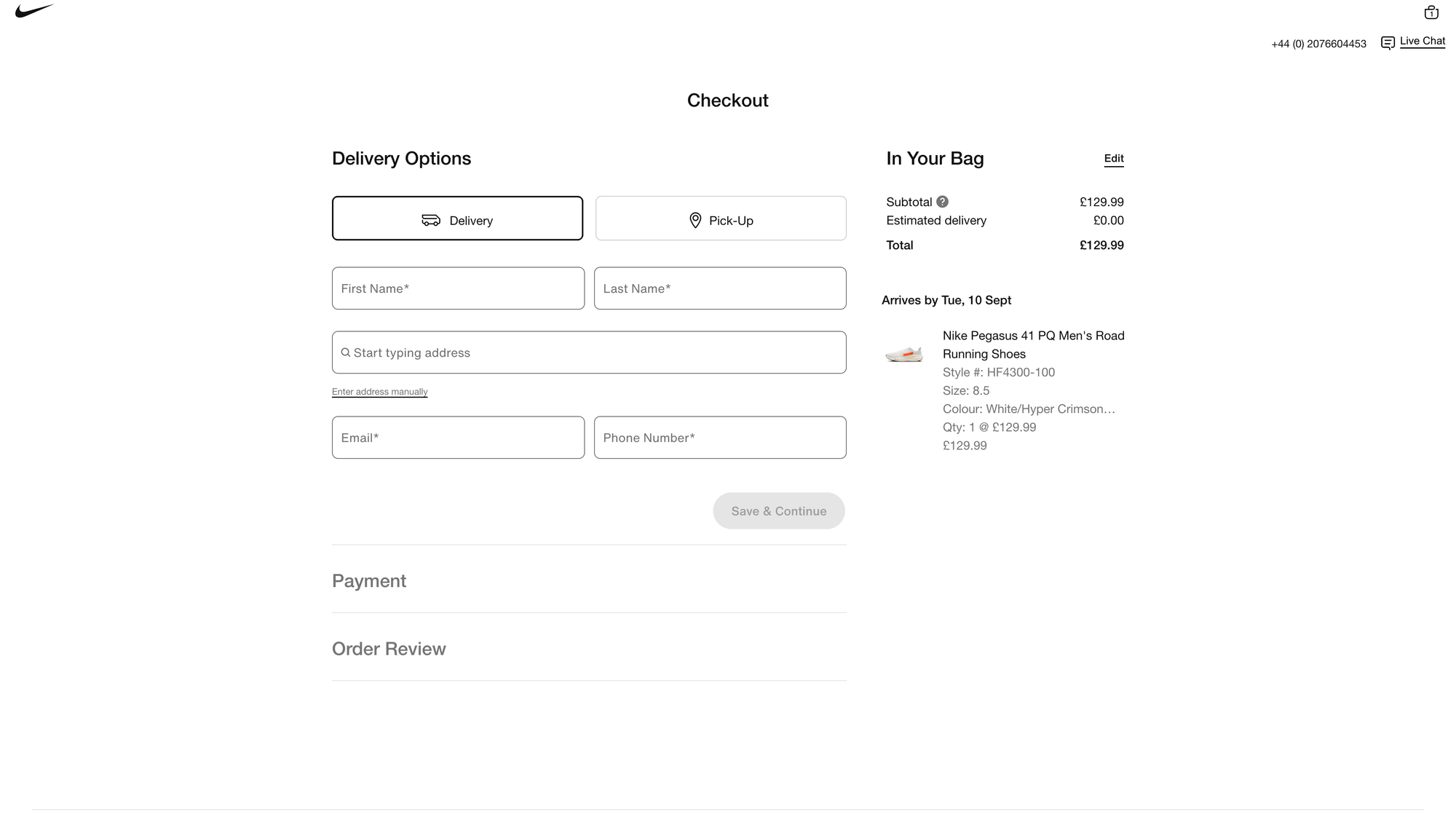
Clean. While conversational design is important, silence is too in order to help customers make their purchase. Source: Nike
Instead of a complex, multi-step form to check out, offering guest checkout options, pre-filled shipping information, and mobile-friendly interfaces can drastically increase conversion rates.
Similarly, minimising ambiguous feedback and frustrating error messages can make users feel like the website is an understanding, cooperative counterpart in their interaction.
CRO UX Design: Turning Conversations into Conversions
For businesses, cro ux design isn't just about improving user experience—it's about making the most out of every interaction.
Well-designed conversational interactions lead to higher engagement, reduced bounce rates, and ultimately, more conversions.
To make CRO-focused UX design work, you must tap into data-driven insights. Run A/B tests to see which conversational elements lead to better conversion rates.
Do users prefer a chatbot guiding them to a solution, or a more traditional FAQ approach? Can a product recommendation engine that learns from previous purchases create a more personal, conversational shopping experience?
At the heart of this is empathy. UX designers need to understand the users’ journey as though they’re sitting right next to them, just like in a conversation.
The better you know your user, the better your design can anticipate their needs, predict their actions, and provide relevant, timely information.
The Future of Conversational Design in Digital Spaces
The future of UX/UI design is inevitably moving towards more conversational, human-centred experiences.
As we interact with increasingly complex systems, the goal is to make these interactions feel simpler, not more convoluted.
Whether it’s through chatbots, voice interfaces, or intuitive web designs, the essence remains the same: humanising digital spaces to make them more efficient and enjoyable.
In short, designing for conversations isn’t just about adding a chatbot or perfecting a voice assistant—it’s about creating systems that respect user time, understand their needs, and offer seamless paths toward their goals.
By integrating conversational principles into ux conversion optimisation and cro UX design, we can create digital experiences that not only feel natural but also deliver meaningful results for users and businesses alike.
The takeaway?
Think like a conversationalist. Understand your users’ needs, predict their actions, and design digital experiences that guide them smoothly and cooperatively toward conversion.



